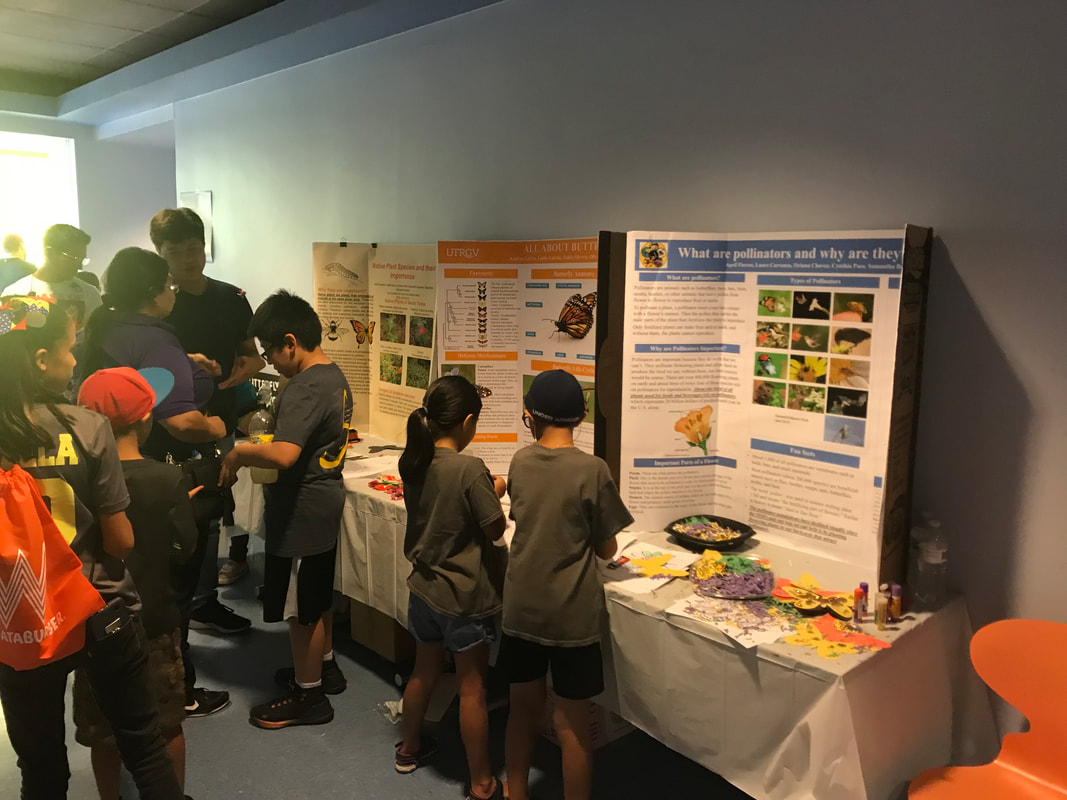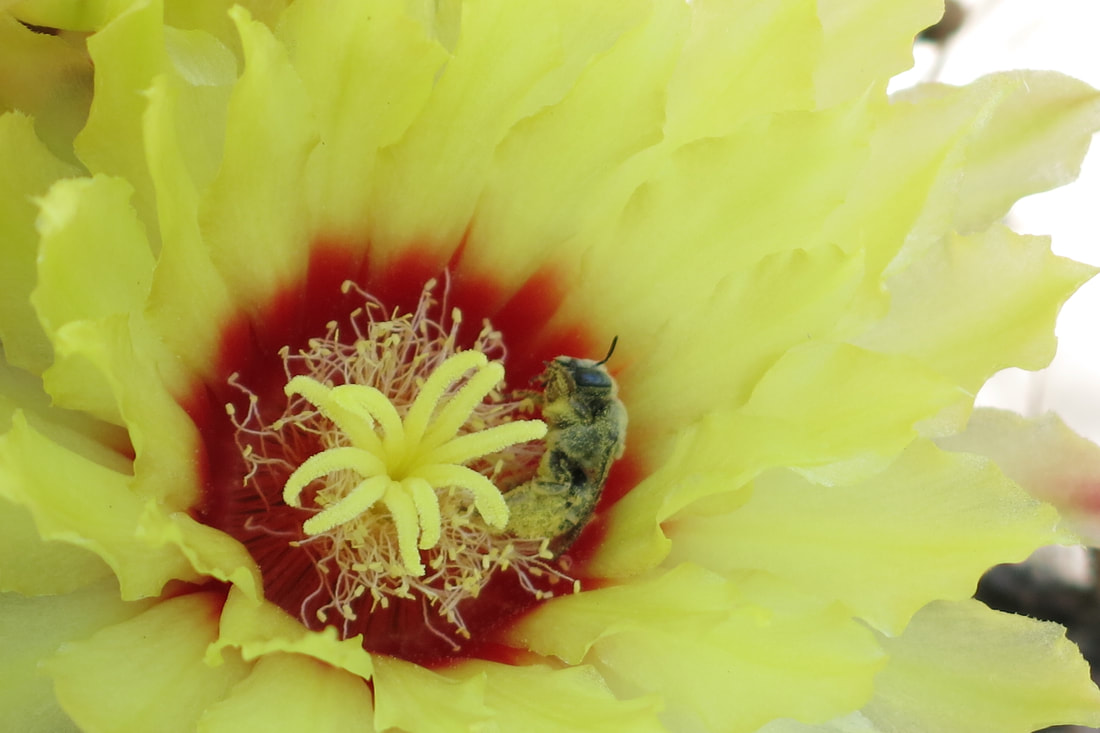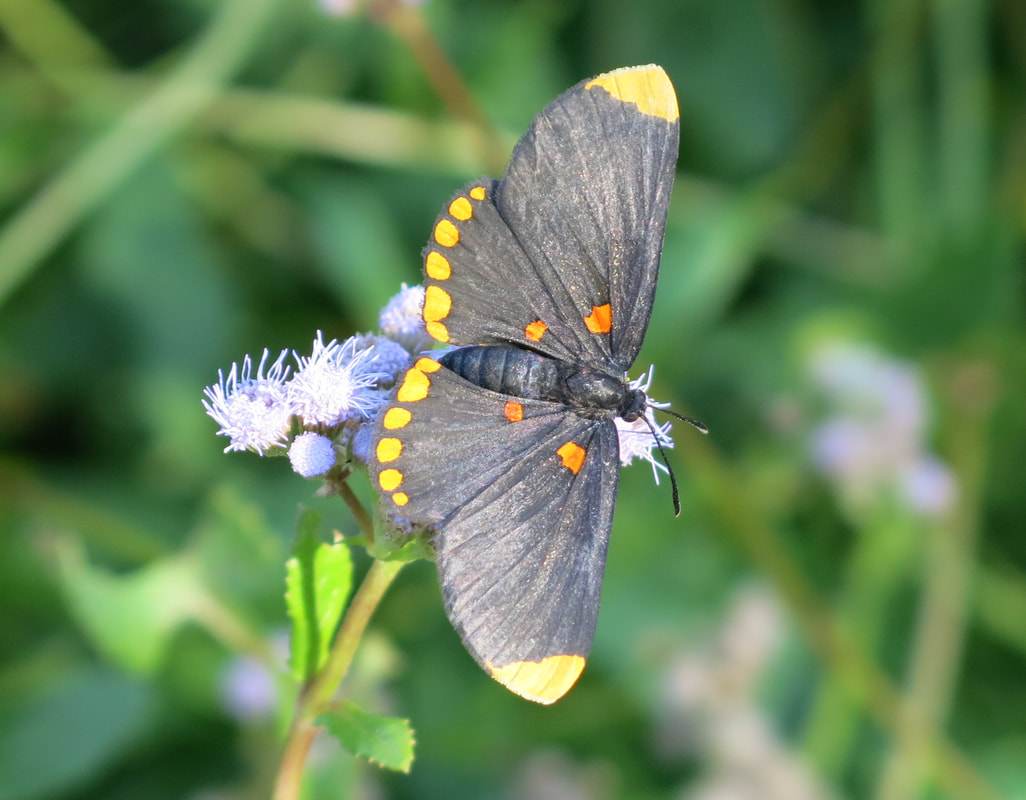Recognizing that the goals of Bee Campus USA to improve pollinator habitat and health aligned with those of UTRGV, we applied to become a Bee Campus USA affiliate and achieved certification in August 2018. The Bee Campus Committee is made up of faculty, students, and grounds maintenance staff.
Earth Fest: This event was attended by over 1,000 students, staff, and community members. Those who stopped by were also able to examine native bees and honey bees under the microscope to observe how pollen is carried by bees between flowers. The Bee Campus booth also included a display of live honey bees. Pollinator plant seeds were distributed. Additionally, participants learned about plastic pollution, solar energy, water conservation, and stormwater management.


HESTEC
: Families participated in activities to learn about the importance of pollinators as part of the Hispanic Engineering, Science, and Technology (HESTEC) Week community day.
The newly created pollinator garden was constructed by student and community volunteers. Members of the facilities staff also volunteered their time.




At the beginning of 2020, a grant from the USDA Natural Resources Conservation Service provided funds to extend the pollinator garden. The expansion is currently underway with 16 additional beds.
Several courses including Introductory Biology and Ecology incorporate service learning in the garden. Students participate in garden construction and maintenance, in doing so learning about soil amendments and drip irrigation as well as native plants and pollinator friendly practices.
Additionally, students in the Ecology course take their knowledge out into the community. For example, students created activities about pollinators that were presented at the Brownsville Children’s Museum and seeds for pollinator plants were distributed during Earth Fest celebrations.


The pollinator garden has been used in multiple courses at both the undergraduate and graduate levels.
Introductory Biology students learn to identify insects and keep a record of which insects they see on which plants.
As part of the undergraduate Ecology course, students participated in a workshop on drip irrigation and water conservation hosted by the Center for Sustainable Agriculture and Rural Advancement at UTRGV. Students were then able to apply what they learned by installing the drip irrigation system in the garden.
As part of the graduate Plant–Animal Interactions course, students designed and carried out projects that utilized the garden.

Signs in the garden identify native plants and the pollinators with which they are most associated. In addition, we are in the process of making signs identifying native trees on campus that supply pollen and nectar, or serve as larval hosts for pollinators. These signs will include both English and Spanish text.
UTRGV has a pollinator-friendly integrated pest management plan available at: https://reports.aashe.org/media/secure/1017/7/659/5033/UTRGV%20Integrated%20Pest%20Management.pdf
A list of the pollinator plants used in the Pollinator Cantina is available under “About the Garden” at:
www.utrgv.edu/pollinatorcantina
Other pollinator plant lists for the Rio Grande Valley are available online at:
www.naba.org/ftp/butterfly_plants.pdf
www.wildbeestexas.com/pollinator-plant-id
Local suppliers of native plant species:
http://www.heepsnursery.com/
www.nationalbutterflycenter.org/support-nbc/plants-for-sale





